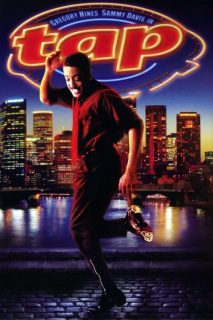
- Year: 1928
- Released: 22 Nov 1928
- Country: United States
- Adwords: 1 win
- IMDb: https://www.imdb.com/title/tt0019109/
- Rotten Tomatoes: https://www.rottentomatoes.com/m/lonesome
- Metacritics:
- Available in: 720p, 1080p,
- Language: English
- MPA Rating: Passed
- Genre: Comedy, Drama, Romance
- Runtime: 69 min
- Writer: Mann Page, Edward T. Lowe Jr., Tom Reed
- Director: Pál Fejös
- Cast: Barbara Kent, Glenn Tryon, Fay Holderness
- Keywords: loneliness, amusement park,
 | 7.8/10 |
 | 100% – Critics |
 | 46% – Audience |
Lonesome Storyline
A lonesome boy and a lonesome girl meet accidentally on their Saturday-off at Coney Island. It is love at fight sight but over the bewilderment of their sudden romance and escape from loneliness, they don’t even realize they don’y even known each other’s name until a fire breaks out and they are separated.—Les Adams
Lonesome Photos



Lonesome Torrents Download
| 720p | bluray | 643.52 MB | magnet:?xt=urn:btih:2DCCDD23406311849C4128B871B40D94EE84565C | |
| 1080p | bluray | 1.17 GB | magnet:?xt=urn:btih:1F33A73F77B5EDB8ADE9604BE37A04B59E03D270 |
Lonesome Subtitles Download
| Arabic | subtitle lonesome.1928.720p.bluray.x264-geckos | |
| English | subtitle Lonesome.1928.1080p.BluRay.x264-GECKOS | |
| Farsi/Persian | subtitle َAll Bluray 720p & 1080p |
Lonesome Movie Reviews
A lost masterpiece?
This film is outstanding.
A man and woman leave their respective rented rooms for work. He’s a “punch presser”; she’s a switchboard operator. After work, neither one feels up to joining friends; they just feel too … single. But they both head to Coney Island. They meet, fall in love, get separated, return home distressed. A plot that simple, even clichéd, does not appear to hold much promise.
But the energy! The pacing is so frenetic. There’s constant movement on camera, clocks ticking, crowds scurrying, throngs crushing, machines stamping, carnivals, streamers, roller coaster rides. Moments of relative calm come when the lovers are together.
The thrilling impersonality of the urban maelstrom has hardly been better depicted. I came away thinking it was one of the best things I’ve seen.
If you’ve seen “The Devil and Miss Jones”, the Jean Arthur / Robert Cummings comedy from 1941, then you can’t help but remember the Coney Island beach scene where everyone is packed in together with barely room to move.
Well, this film has a scene just like that one. In fact, the greater part of the film is that way. You’re never so alone as when you’re in a crowd. These scenes are funny, but they do make their point.
I saw a restored print of “Solitude” (as it was titled) with colour tinting and three sound sequences, courtesy of Cinematheque Ontario. The sound segments are just awful, so typical of the very earliest sound, but perhaps they’re a blessing in disguise. The extraordinary quality of the silent film is spotlighted by the awkwardness of these three brief scenes: Jim and Mary on the beach, Jim and Mary near the midway, Jim at the police station.
The ultimate restoration of this elusive marvel would make the film silent throughout, liberating it from the stylistic cacophony of the stilted sound sequences.
Neither lead performer, Barbara Kent nor Glenn Tryon, was known to me previously. (Andy Devine is plainly recognizable however.) It seems that Tryon later became the producer of “Hellzapoppin” and “Hold That Ghost”. He also holds the only acting credit for a film that anyone at all seems to have seen, “Variety Girl” from 1947. To me, Barbara Kent resembles Paulette Goddard somewhat, while Glenn Tryon looks like a brother to Don DeFore and Bob Cummings.
The screening I attended was the Toronto première of the restoration. Let’s hope it now becomes more widely available.
Charming!
Despite Mordaunt Hall’s slightly negative review in The New York Times (the critic has it for Fejos whom he constantly and consistently refers to as Doctor Fejos), this is a movie that has gathered a well-deserved reputation despite being burdened with three added sound sequences which are not only banal in themselves, but hold up the exposition of the charming plot. Fortunately, the DVD is the silent version. Alas, it is printed in black-and-white. No tints! That’s a shame, but nonetheless you can get the drift of the story and see the excellent performances delivered by Tryon, Kent and the rest of the cast. As some of you know, Hal Roach built up Tryon as a comedian to replace Harold Lloyd, so it is something of a surprise to see him in a serious, romantic role, but he manages the transition supremely well. Barbara Kent is delightfully charming as the girl. Nostalgia lovers and history buffs will enjoy the well-staged location footage at Coney Island.
intoxicating, dated, lovely, charming, and very much of its time – and experimental wonder
Lonesome is like the much more charming, if slightly less ambitious (and at the very end a bit too cute) cousin of Sunrise. It’s appeal is in its simplicity, but where Sunrise was about a couple breaking apart and coming back together, this is much more streamlined and less tragic (though it does go for some tragic beats in the last twenty minutes of its slim 70-minute run-time): boy is lonely, girl is lonely, both work working-class jobs (factory/phone operator, what else in New York city in 1928?), they both decide separately after their (so-called!) friends go off on their own adventures to go to the beach and amusement park – is it Coney Island? I can’t imagine it being anywhere else – and boy and girl meet as the boy tries to show off doing games. And that’s it, that’s the movie, and why it stands out (and got a sort-of restoration and Criterion treatment) is its presentation by its director.
I don’t know much about Pal (Paul) Fejos except that he directed silent films and somewhat into the 1930’s, and then sort of faded away into obscurity. It’s a shame since a film like Lonesome shows his talents clearly: he has a keen sense of editing and that way that silent filmmakers sometimes had to super-impose images (perhaps a chip off the Abel Gance block perhaps, but not as ambitious), in particular when he’s setting up the hustle/bustle of the city and then later in the film when things get more harrowing with the characters. That is to say when, inevitably, the main conflict is that they are separated in that great sea of people that makes up a massive crowd in a city (where, as the man, Jim, notes at one point, is so strange that you’re surrounded by so many but still feel so alone).
The charm in the film comes in how the couple on screen – Barbara Kent and Glenn Tryon – are together; they’re kind of like if you had one of those romantic “leads” in those really early Marx brothers movies, only they don’t sing and the man is funny in that amusing- lightly- sarcastic way (i.e. bragging about his “six acres on Wall street” at first, which we and the girl knows isn’t true, but it’s fun to play along). Actually, speaking of that, this is an experimental film at heart for a number of reasons. It appears at first to be a silent film, and for 90% of it it surely is, and is shot like one with that film speed we associate with silent cinema on the whole (that kind of slightly-sped-up speed where its rhythm is distinctly of its cameras and era), and we know this because 10% of the film, more or less, is a *sound* film. No, really, we suddenly move from what is the obvious fluid camera style and wide shots of the crowds and intensity that comes with a camera that moves freely to what is clearly static shots in a studio so the actors are right under a microphone… and the acting is just as static.
That’s not totally fair; this is considered, at least according to the trivia, one of the very first films to ever incorporate sound. On that level it’s certainly extraordinary and important, but the problem is that it becomes jarring with the rest of the film which is shot with such passion and excitement (it’s also frankly weird to hear the actor’s speaking voices, whereas before, like I do with a lot of silent movies, I can think of my own voices for the actors that do not sound so… stilted). One of the sound scenes is also one where I wasn’t sure if a cop was being sarcastic or not; our man Jim has been taken away by the cops after a roller-coaster ride where Mary, the girl, fainted and had to be taken away but Jim got separated and got rough with a cop. For a moment it seems like he’ll be put away, but Jim pours his heart out (with some, I’m sorry, cringe-inducing lines), and the cop’s reaction is hard to read since it sounds totally “pfft yeah right”… but then they let him go. Very strange.
But these aren’t major complaints for a film that has so much to offer outside of those things. This is a movie that’s joy is in its purity, that it’s about these two people and how they meet and suddenly all of the usual problems of their everyday lives – the work, the drudgery, the intensity of being around so many people getting on/off the subways or being in the traffic – can float away since they have one another. And there are some moments of experimentation that do work, mostly involving (also, again, a touch of daring with Fejos) color: there’s tinted scenes here, which isn’t unusual for a silent film, but here it’s how the colors are used, over the amusement park scenes to illuminate the lights at night, the performers in the park, the vibrancy that the night off a beach in the city brings.
There are so many moments of rich filmmaking, so much hope that this couple is able to inspire in a short amount of time, and because of the simplicity we’re able to invest ourselves into their bond as it gets closer (maybe a little *too* quick, one might want to argue, falling in love within a day), that one can almost forgive a cutesy ending. Almost.



